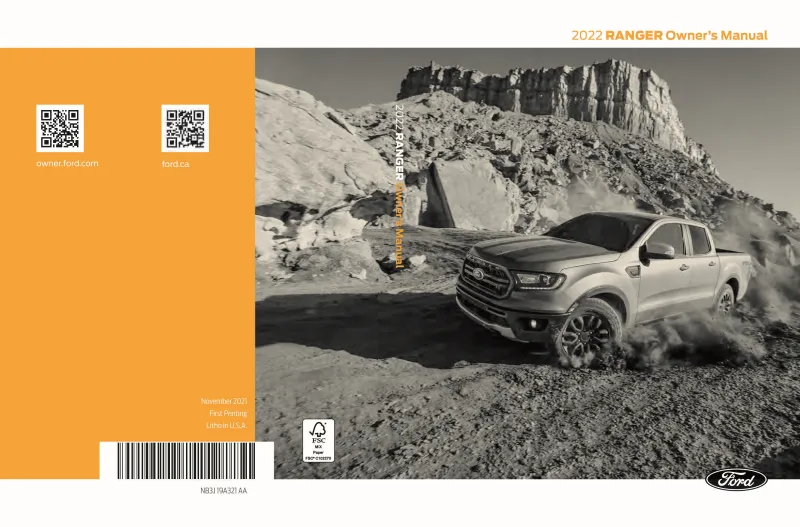2022 Ford Ranger Owner's Manual

Table of Contents
2022 Ford Ranger Overview
Introduction
The 2022 Ford Ranger emerges as a robust contender in the midsize pickup truck segment, renowned for its commendable blend of rugged capability, advanced technology, and everyday usability. With its aggressive styling and a reputation built on durability, the Ranger is perfect for both off-road adventures and urban commutes. Ford has successfully crafted a vehicle that caters to various lifestyles, ensuring that it meets the diverse demands of drivers everywhere.
Powertrains
Under the hood, the 2022 Ranger boasts a powerful 2.3-liter EcoBoost® engine, capable of producing an impressive 270 horsepower and 310 lb-ft of torque. This turbocharged powerhouse is paired with a 10-speed automatic transmission, delivering seamless gear shifts and enhanced fuel efficiency. Additionally, the Ranger offers impressive towing capabilities, with a maximum capacity of up to 7,500 pounds, making it a reliable partner for hauling and towing tasks.
Trims
The 2022 Ford Ranger is available in three distinct trims: XL, XLT, and Lariat. The base XL trim offers essential features, while the XLT adds more convenience and technology, including Ford Co-Pilot360™ advanced safety features. The Lariat trim provides a more sophisticated touch with premium leather seating, upgraded audio, and advanced infotainment options, catering to those who seek luxury alongside performance.
Features
Ford's commitment to innovation shines through in the 2022 Ranger, equipped with features such as an 8-inch touchscreen display with Ford SYNC® 3, allowing for seamless connectivity and control. Drivers can enjoy available features like Apple CarPlay® and Android Auto™ integration, as well as advanced safety technologies like Adaptive Cruise Control and Lane-Keeping Assist, all designed to enhance the overall driving experience.
Owners Manual
The 2022 Ford Ranger comes with a comprehensive owner’s manual that provides valuable information on vehicle operation, maintenance schedules, and troubleshooting tips. This resource ensures that owners can fully understand their truck's capabilities and maintain its peak performance throughout its lifetime, making every journey a reliable and enjoyable adventure.
User manual download
The Ford Ranger owner manual for the 2022 model year is to be found in PDF downloadable format on this page. The owner manual for the model year 2022 is free and in English, but the repair manuals are usually not easy to get and may cost more.
Manual Questions
Fill the form below and someone will help you!

